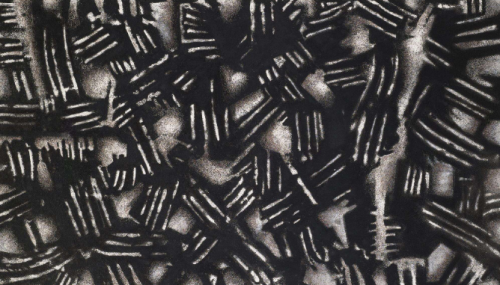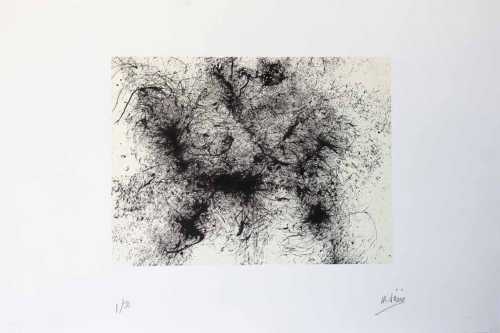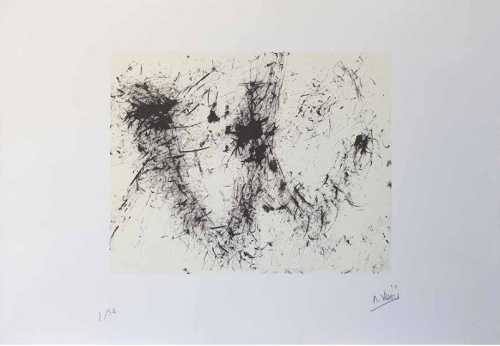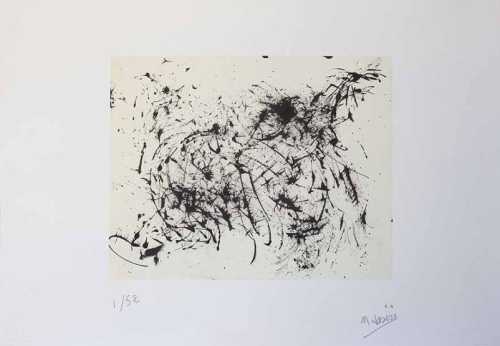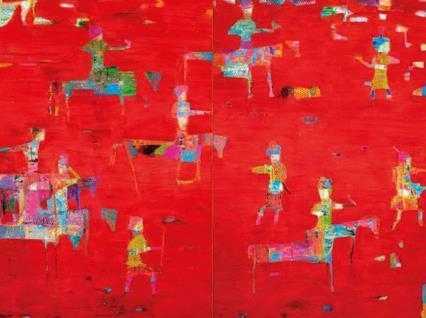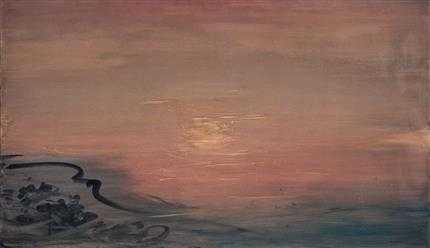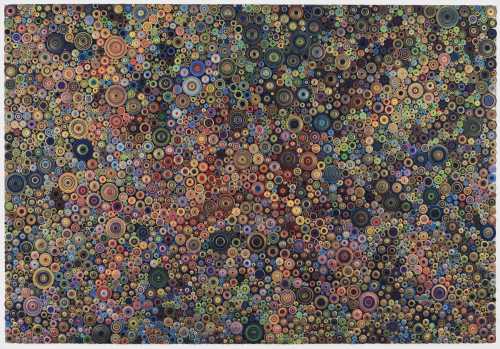- Untitled (Composition) 1962
- Mixed media on canvas
- Painting
- 171.3 * 99.5 cm
- signed and dated Roma 29. May, 1962 on the reverseThis artwork is accompanied by a certificate of authenticity issued by the Foundation. This work is listed in the archive of Mohsen Vaziri Moghaddam Foundation under number CRV_S62_010.
23 March 2022
Estimation
£50,000
65,920 USD
-
£70,000
92,287 USD
Realized Price
£69,300
91,365 USD
15.5%
Artwork Description

Mohsen Vaziri Moghaddam (1924-2018) was a master of abstraction, experimenting with geometric shapes to deconstruct conventions of figuration. His early career is marked by a solid artistic training in the Tehran Faculty of Fine Arts and the Accademia di Belle Arti in Rome. It is in the latter that he first encounters American abstract expressionism, through his mentor Toti Scialoja. Encouraged to let go of his previous teachings, Vaziri strived to produce original visual spaces, unburdened of social or political purpose. In time, his art became embedded in primitivism, where shapes, medium and colours are granted the space necessary to unleash their full visual potential (Setareh Gallery 2018).
Vaziri first conceptualized his sand works in the period following his training in Rome, between 1959 and 1963. Thanks to a newly enlarged field of experimentation, this was to become a pivotal and highly prolific time in the artist’s career. He recalls how inspiration came to him in the least expected moments:
“I was playing with black sand on the shore and entertaining my friends. Suddenly, the traces of my fingers in the sand caught my attention: I had an idea and memories of my childhood and playing with sand as a child came flooding back…. A trivial game turned into a visual practice. I stopped playing with my friends and I went back to Rome with a bag of sand. Finding shapes in sand turned into a pastime and it took me months to transfer the patterns I found onto a canvas.”
This painting embodies the genesis of what will become an endless source of inspiration and intellectual questioning for Vaziri. Already visible in this painting is his concern for structure, and how a simple shift in his imprints may alter both the material and its dynamic. He shared fundamental ideas with Mondrian, about whom he wrote his degree thesis, on the subjective nature of art. For both artists, art is beyond reality and therefore non-representational in essence. However, where Mondrian aimed to reduce his artistic vocabulary to simple geometric shapes, Vaziri on the other hand, sought to free his composition of linear conventions.

This quest, which will direct most of his career, raises Vaziri to the rank of Modernist master, not only in Iran, but in the world’s artistic community. It is crucial to note that, despite their striking stylistic and conceptual similarities, Vaziri’s work predate Jasper Johns iconic crosshatched patterns from the 1970s, and Richard Long’s mud works from the 1980s.
In 1964, one of his works from the Sand series was acquired by the MoMA and added in their permanent collection. Others appeared in several Biennales around the world and earned him a number of rewards. Some other works are currently on display at Tehran Contemporary Art Museum, the Saba Cultural and Artistic Institute in Tehran and in the Fondazione Mohsen Vaziri Moghaddam, Rome.
Setareh Gallery 2019. MOHSEN VAZIRI MOGHADDAM | THE IRANIEN PIONEER OF MODERN ABSTRACTION. Accessible at: https://www.artnet.com/galleries/setareh-gallery/mohsen-vaziri-moghaddam-the-iranian-pioneer-of-modern-abstraction/
More lots by Mohsen Vaziri Moghaddam
Realized Price
32,772 USD
Min Estimate
23,344 USD
Max Estimate
32,657 USD
Average Artwork Worth
+35.142%
Average Growth of Artwork Worth
Sales Performance Against Estimates
Average & Median Sold Lot Value
2021 - 2025
Performance vs. Estimate
2021 - 2025
Sell-through Rate
2021 - 2025
